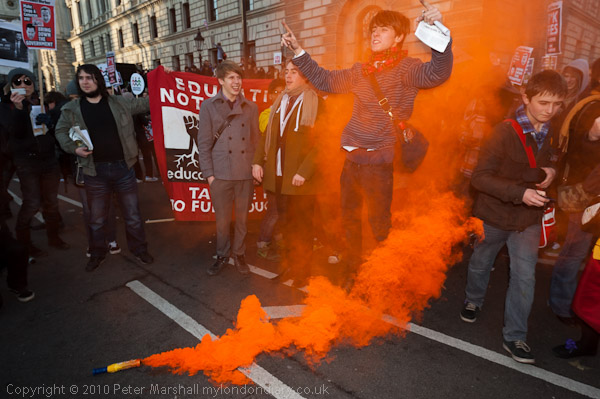
Thursday 9th December 2010 was the day of a third student protest against the three-fold increase in university tuition fees which was being debated in Parliament that day, and the scenes in the area around were probably the most confusing of any I’ve seen in London.
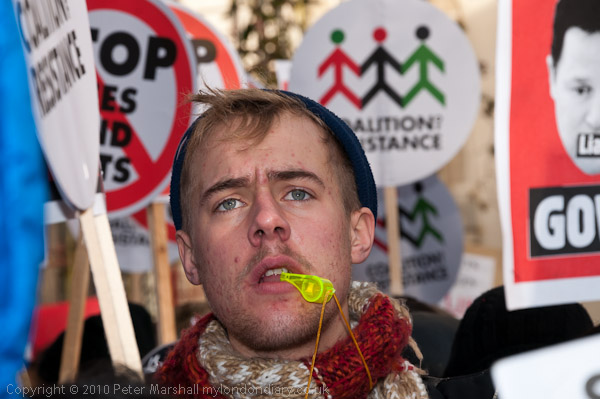
My account of my day on My London Diary runs to around 1,700 words, and I’ll attempt not to repeat myself here, while giving a rather shorter account. The march started outside the University of London Union in Malet St, with a crowd of perhaps 10-20,000 including many sixth-formers who would be hit by the £9,000 a year fees when they went to university as well as current students and supporters.
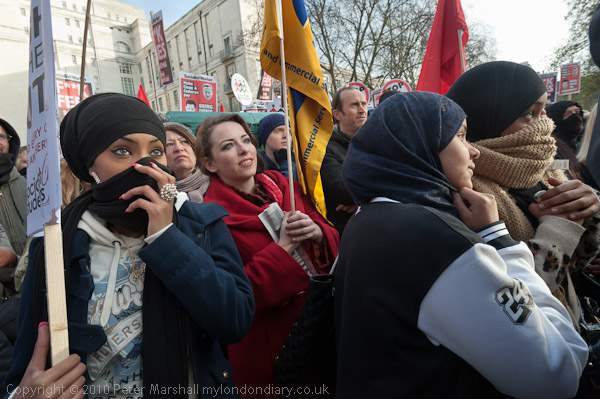
There was a good atmosphere as the crowd listened to speeches there from trade unionists, John McDonnell MP and two sixthformers from schools that were being occupied in protest who got the largest cheers. As usual with student protests there was plenty to photograph.
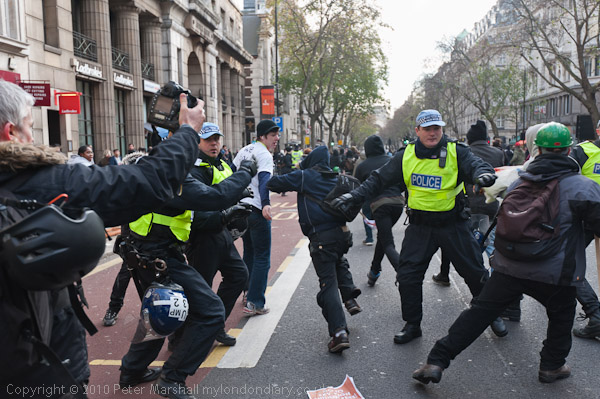
The march began well though progress was rather slow, and several hundred students decided to walk in front of the main banner and for some reason police tried to stop them. They thought they were about to be kettled and rushed off towards Covent Garden. The official march continued without obstruction along the agreed route along the Strand. It wasn’t at all clear what the police had intended, and this was something that set the scene for the day.
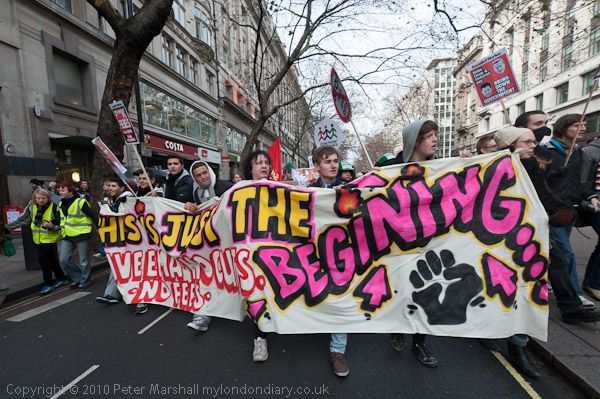
Many more protesters joined the march at Trafalgar Square, and rather than proceed down Whitehall, police and march organisers had agreed on a route though Admiralty Arch and down Horseguards Road, and then left into Parliament Square. The march was then meant to continue down Bridge Street to an official rally on the Embankment, but most marchers had a different idea and wanted to stay in Parliament Square, the obvious place for the protest to continue.
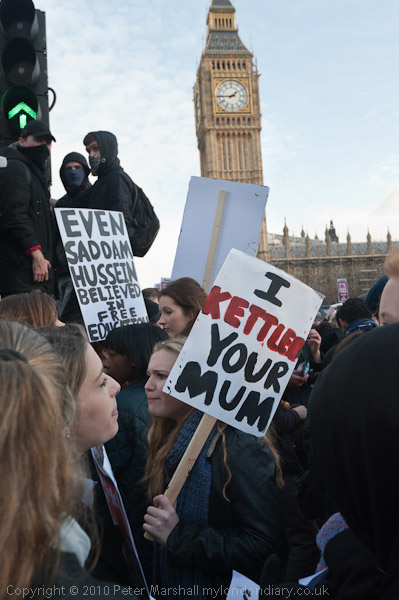
It’s hard to understand why either police or march organisers had thought people would march on rather than stay outside Parliament – and probably many on the march had simply assumed it would end there. And soon police were actually preventing any who wanted to go on by blocking all the exits from Parliament Square except that into Whitehall (which they later decided to block.)
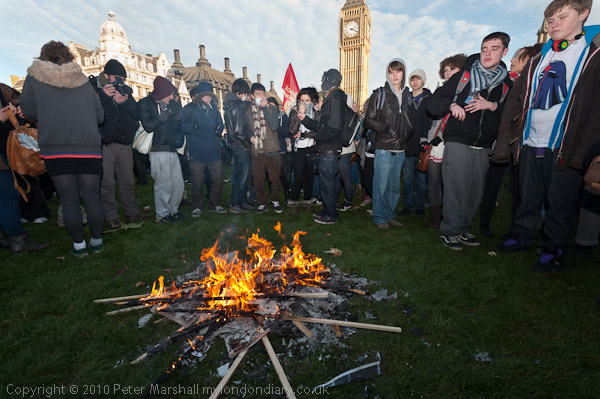
I managed to move around thanks to my press card, but even with this I was often refused access through police lines even in calm areas, and had to move along and find other officers in the line who would let me through, or take a longer walk around to get to where I wanted. The police didn’t appear to know what they were supposed to be doing and at one point I was being crushed by the crowd against the barriers in front of the riot police who were threatening us with batons unless we moved back – which was impossible because of the crush. Several press colleagues did get injured.
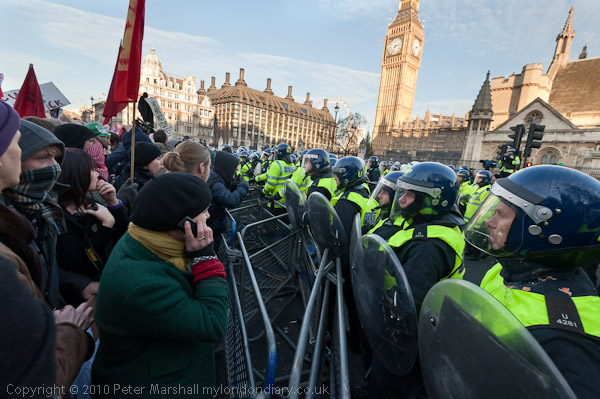
Late in the day students who wanted to leave were told by officers they could do so by going up Whitehall – only to be stopped by other police who were closing the street off. We were pushed back into Parliament Square by riot police and police horses. Police told protesters they were not being detained although they were not being allowed to leave, a kind of police logic most of us find infuriating.
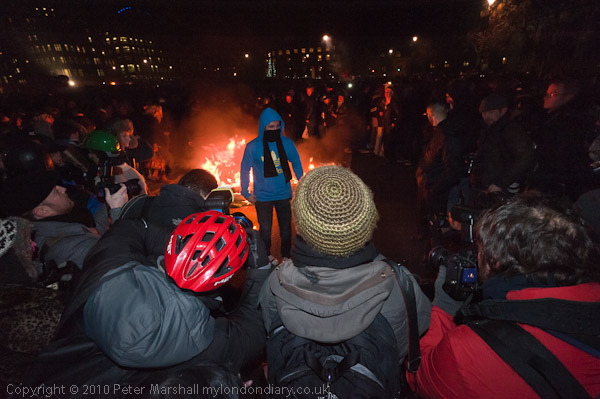
Kettling like this is used by police as a kind of minor but arbitrary punishment, and as in this case it often leads to violent incidents and arrests which are then used to retrospectively justify police actions. After I had managed to get through one of the police lines and catch a bus away from the area I heard that Police had pushed a large group into a very confined space on Westminster Bridge with a total disregard for their safety, with some needing medical treatment for crushing. As I pointed out “there could easily have been more serious or fatal injuries and people pushed into the freezing river below.”
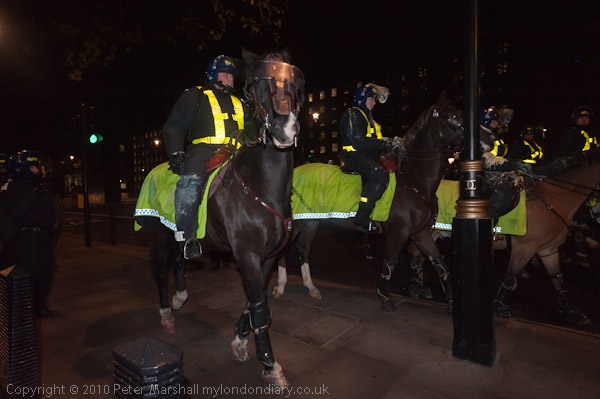
Of course protests like this need to be policed to avoid serious disorder. But the confused and sometimes unnecessarily violent way it was done on this occasion seemed to create most of the problems of the day.
As well as a long account of my day there are many more pictures on My London Diary in Students Against Cuts – Day 3.







